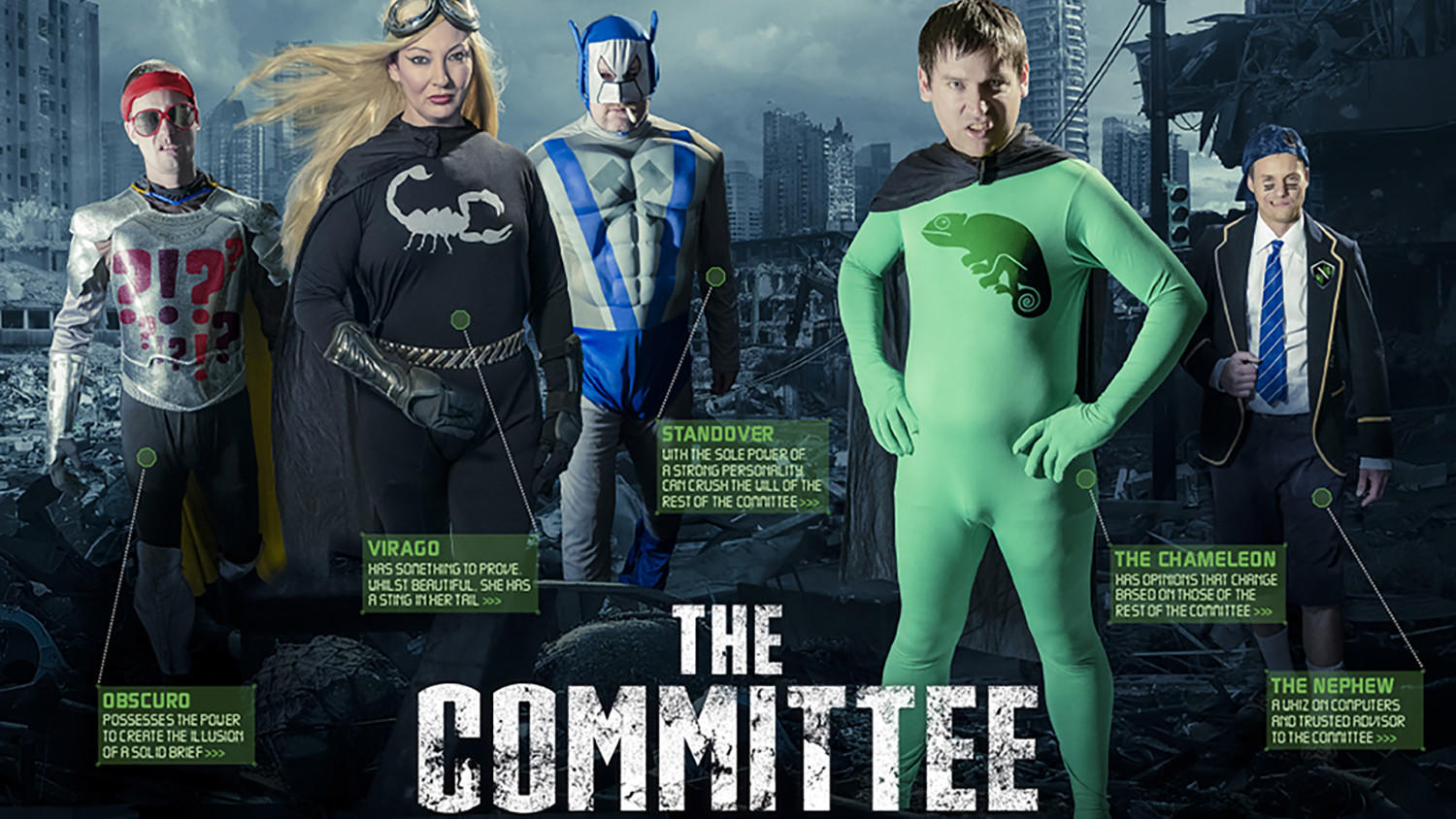
Do committees have to yield bland design / marketing?
In higher education it is common that design and publication projects are undertaken for, or via, a committee. How can you ensure that the end result isn’t ‘design by committee’: the nemesis of effective design?
This scenario usually takes one of two forms:
1) Committee > Go-between > Designer; or
2) Committee > Designer.
Occasionally you might find yourself in the Committee > Sub-committee > Go-between > Designerscenario, but as this is so inefficient and traumatic, let’s pretend for now that you will never find yourself in that situation.
Whether you are the Go-between in scenario 1 above, or the Designer in Scenario 2, it is you that has the power, or be it the responsibility, to manage the committee to ensure effective design can prevail over design by committee.
If you’ve found yourself in either of these positions before, and things haven’t ended in an aesthetically or budgetary pleasing manner, you will recall that by the time you’ve recognised things were heading south, it was all too late to right the ailing voyage. Like all relationships in life, setting out ground rules and boundaries, at the start, is the key to success.
From the get-go it’s important that the roles of each player are defined, and that the rules of engagement are set out and understood.
The Committee
The Committee’s role (broadly speaking) is to define the need they are engaging the designer to address; what needs to be communicated, who does it need to be communicated to, and what are the parameters the project will need to occur within (university brand guidelines etc)? It is not their role to bring their creative whims to the mix.
The Go-between (or the Designer in scenario 2)
The Go-between’s role is to distill the needs of the committee and effectively communicate them to the designer, ensuring the designer has all of the information they need to effectively undertake the work. If the committee does not provide a firm foundation to the Go-between, or the information given assumes the designer should rely on guesswork or assumptions, the Go-between’s role is to fill those information holes before briefing the designer. It is neither the Go-between nor the Committee’s job to engage in opinion sharing. However, it is the role of the go-between to ensure that both they and the committee don’t stray from this very important rule.
The Designer
The Designer’s role is to take the information given, identify and communicate any gaps in the information, and provide visual solutions that meet the brief. It’s vital that the designer is acting to serve the brief and the needs of the committee, rather than their own artistic opinions or desires. The designer must delve into their bag of creative experience to effectively communicate the intended message to the intended audience.
It seems simple enough, but why does it go wrong so often?
Opinion is the problem here. When a committee is allowed to throw their aesthetic opinions into the mix, things can either go wrong in terms of visual outcome, or from a budgetary sense, or both.
Most likely, the committee is made up of experts in their field: academic, managerial or the like. Nothing good can come out of 5 or more strong opinions being allowed to visually craft a designed communication piece, when the opinions are not those of trained visual experts. If 5 very different opinions must be taken into account and added to the visual mix, essentially an average of the 5 will result — each cancelling aspects of the others, or the original design out, resulting in nothing but bland design that’s engineered for one purpose — to please the committee.
Often, this is the fault of the Go-between. If the Go-between sees their goal as pleasing the committee above yielding effective design… or, as mentioned in scenario 2 above, if the Designer dealing with the committee has failed to define the roles at the beginning of the process, or is simply afraid of offending the committee.
As the make-up and politics involved will be different from case-to-case, it’s hard to make a definitive list of ‘to-dos’ to avoid things turning pear shaped, but if there is one golden rule for dealing with committees that will save you if laid on the table at the beginning of the process it is:The rules of feedback.
Take opinion out of the mix by defining, from the beginning, what is and isn’t allowed. The committee must agree from the start that their feedback must be based on strategy or fact, rather than personal preference or opinion. In a nutshell:
“I don’t like purple, can we see what it looks like in green? I like green.” is not allowed as it’s based on one persons personal preference.
Whereas, “Our audience is made up of elderly people who are known to associate purple with mortality. Can we explore a different colour?” is a perfectly valid, strategic piece of feedback, geared to make the communication piece more effective.
If the Committee can adhere to this simple rule during the design process, you can be sure that opinion, the kryptonite of your project’s success, is at least removed from the equation.
What’s your secret to navigating the perils of Design by Committee?








Submit a Comment